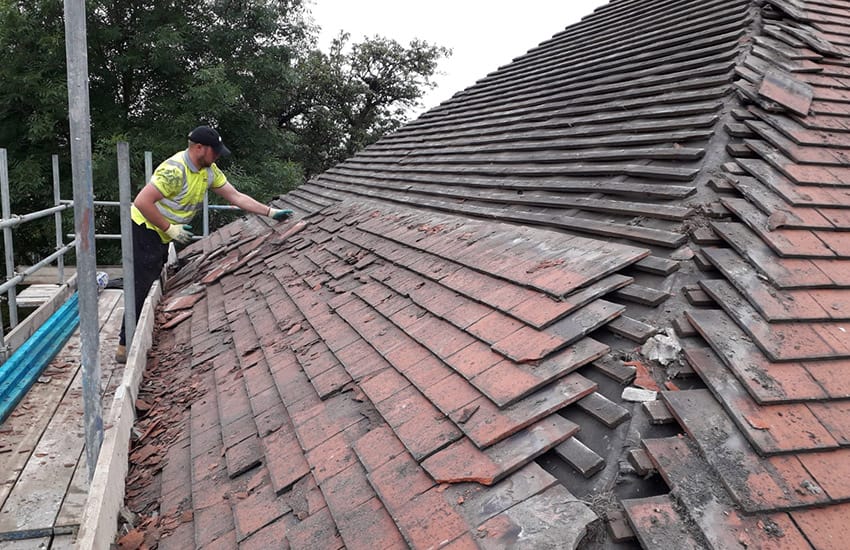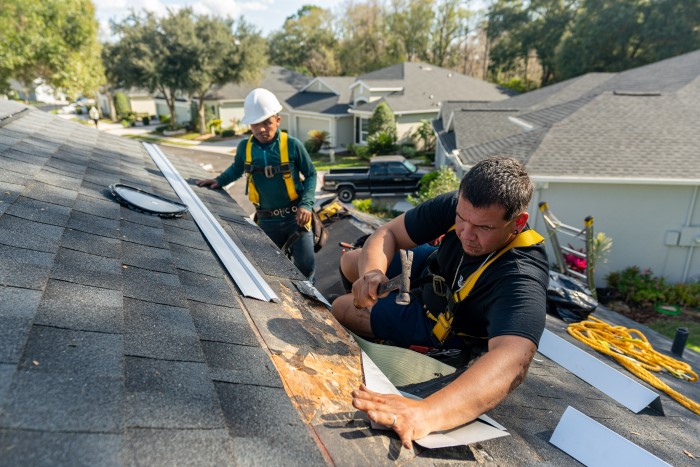Roof Repair Oahu: Expert Roof Repair Works for Lasting Security
Roof Repair Oahu: Expert Roof Repair Works for Lasting Security
Blog Article
Comprehending the Different Sorts Of Roofings: A Comprehensive Overview for Homeowners
In the world of homeownership, selecting the ideal roof covering design is a decision that lugs significant ramifications for both performance and visual appeal. With a selection of choices-- ranging from the traditional gable to the modern level-- each type offers one-of-a-kind benefits and obstacles that ought to straighten with the property owner's ecological considerations and details needs. Comprehending these differences not just help in making an educated choice however also influences lasting maintenance and energy effectiveness. As we discover the complexities of different roofing system types, it becomes apparent that one size does not fit all; the ideal selection may shock you.
Gable Roofing Systems
Saddleback roofs, defined by their triangular form, are amongst the most popular roofing styles due to their simpleness and efficiency in shedding water and snow. This style features two sloping sides that satisfy at a ridge, permitting for effective drain and decreasing the threat of water accumulation. The steep pitch generally connected with saddleback roofs boosts their capability to handle hefty rainfall, making them suitable for different environments.
In enhancement to their useful benefits, gable roofing systems provide visual adaptability. They can be adapted to numerous building designs, from traditional to contemporary homes. The style can additionally suit additional attributes such as dormer home windows, which enhance natural light and ventilation in the attic area.
In addition, saddleback roofs provide ample area for insulation, adding to energy efficiency. Home owners can select from a variety of roof materials, including asphalt roof shingles, steel, and tiles, additionally improving personalization choices.
Regardless of their advantages, saddleback roofs may need extra assistance in locations prone to high winds or heavy snowfall. On the whole, the gable roofing remains a favored choice because of its mix of functionality, toughness, and aesthetic allure.
Apartment Roofs
Flat roofing systems are usually acknowledged for their minimalist design and useful applications, especially in commercial and business settings (oahu roofing). These roofing systems feature a horizontal or almost straight surface, which permits very easy building and versatile area application. While they might do not have the aesthetic allure of pitched roof coverings, level roofing systems offer countless benefits, specifically in city environments where optimizing space is crucial
One of the primary advantages of flat roofs is their accessibility. Property owners can make use of the roofing system space for numerous functions, such as rooftop yards, terraces, or photovoltaic panel setups. Furthermore, flat roofing systems are commonly a lot more cost-efficient to maintain and install contrasted to their sloped equivalents, as they require fewer products and labor.
However, level roofing systems do present certain obstacles. Appropriate drainage is vital to stop water pooling, which can lead to leaks and structural damage. Hence, picking high-quality waterproofing materials and regular assessments are critical for making certain long life. Common materials used for level roofing systems include built-up roof covering (BUR), modified asphalt, and single-ply membranes, each offering unique benefits. Overall, flat roofings act as a versatile and functional option for several homeowners and services alike.
Hip Roof Coverings
Hip roofing systems are identified by their sloped sides that converge at the top, forming a ridge. This style is unique from saddleback roofs, as all four sides of a hip roofing slope downwards towards the wall surfaces, providing an extra secure framework. The angle of the slopes can vary, enabling for flexibility in architectural aesthetic appeals and performance.
Among the main advantages of hip roof coverings is their ability to endure heavy winds and unfavorable climate condition. The sloped surfaces make it possible for far better water drainage, decreasing the risk of leakages and water damage. Additionally, hip roof coverings offer enhanced attic space, which can be made use of for storage space or perhaps exchanged livable locations.
However, creating a hip roof can be extra complex and costly than simpler roof covering types, such as saddleback roofs. The additional material and labor included in developing the slopes and ensuring proper architectural integrity can cause greater expenditures. Regardless of these disadvantages, lots of homeowners favor hip roofs for their resilience, aesthetic allure, and possibility for energy effectiveness.
Mansard Roofings
Mansard roofing systems, commonly recognized by their one-of-a-kind four-sided design, function 2 inclines on each side, with the lower slope being steeper than the upper. This building style, originating from France in the 17th century, is not only visually attractive however practical, as it makes the most of the functional room in the upper floorings of a structure. The high lower incline permits even more clearance, making it an ideal choice for attics or loft spaces, which can be exchanged living spaces.
Mansard roof coverings are defined by their adaptability, fitting numerous architectural designs, from typical to modern. They can be created with various materials, consisting of asphalt shingles, slate, or metal, offering home owners with an array of alternatives to fit their choices and spending plans. In addition, the design allows for the assimilation of dormer home windows, boosting natural light and air flow in the top degrees.
Nevertheless, it is important to consider the potential disadvantages. Mansard roofings might call for even more maintenance because of the complexity of their design, and their steep inclines can be testing for snow and rainfall runoff. On the whole, mansard roofs incorporate beauty with usefulness, making them a preferred option amongst property owners looking for distinctive architectural attributes.
Shed Roofs
As home owners significantly look for simpleness and capability in their building layouts, shed roofing systems have actually become a preferred choice. Identified by a solitary sloping plane, a shed roof covering offers a minimalist visual that matches different home designs, from contemporary to rustic.
One of the primary benefits of a shed roof is its simple construction, which frequently converts to decrease important site labor and material expenses. This style enables for efficient water drainage, minimizing the threat of leaks and water damages. Furthermore, the great post to read vertical slope provides enough area for skylights, boosting all-natural light within the interior.
Dropped roofing systems additionally provide convenience in terms of use. They can be properly integrated right into enhancements, garages, or outdoor frameworks like sheds and structures. Additionally, this roof covering design can suit various roof products, including metal, asphalt roof shingles, and even environment-friendly roofings, lining up with eco-friendly initiatives.
However, it is necessary to think about regional environment problems, as hefty snow loads might necessitate changes to the roofing system's angle or framework. Overall, lost roofs provide a practical and visually pleasing alternative for house owners wanting to make the most of functionality without compromising style.
Conclusion


Gable roofings, characterized by their triangular shape, are among the most popular roof covering designs due to their simpleness and efficiency in losing water and snow. oahu roofing. The steep pitch typically connected with gable roof coverings boosts their capability to deal with hefty rainfall, making them appropriate for numerous environments
While they may do not have the visual charm of pitched roofing systems, level roof coverings supply various advantages, especially in urban atmospheres where maximizing see post area is essential.

Report this page